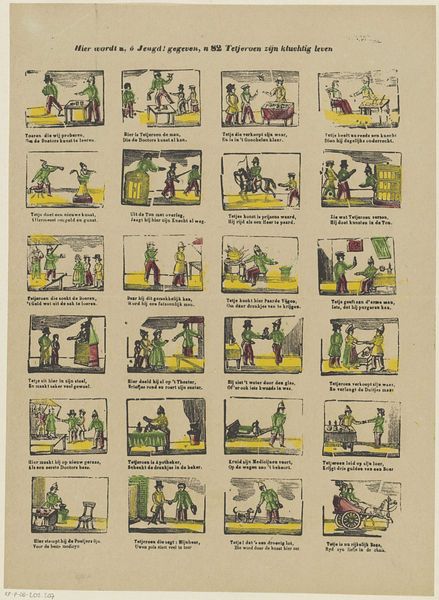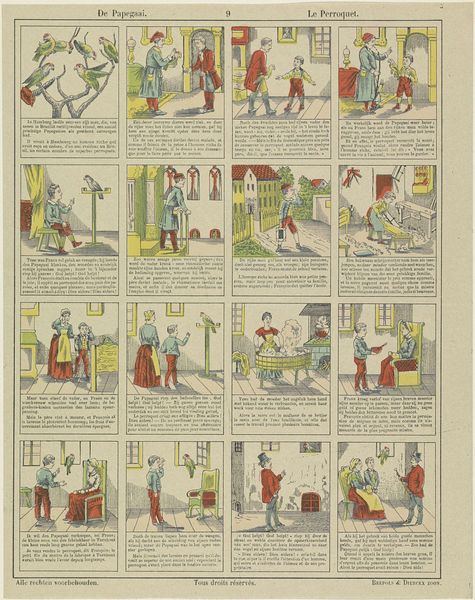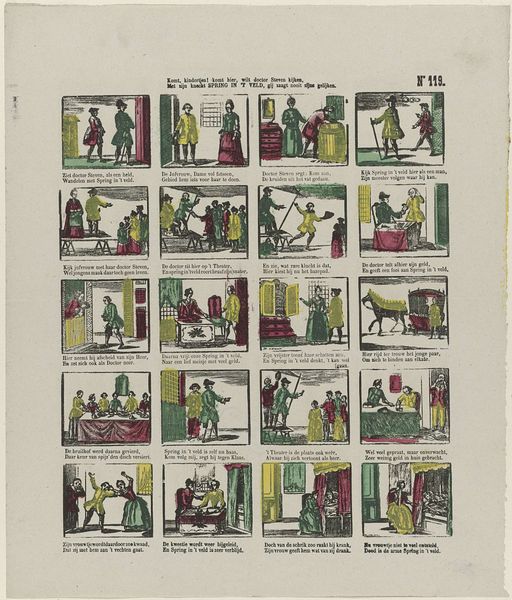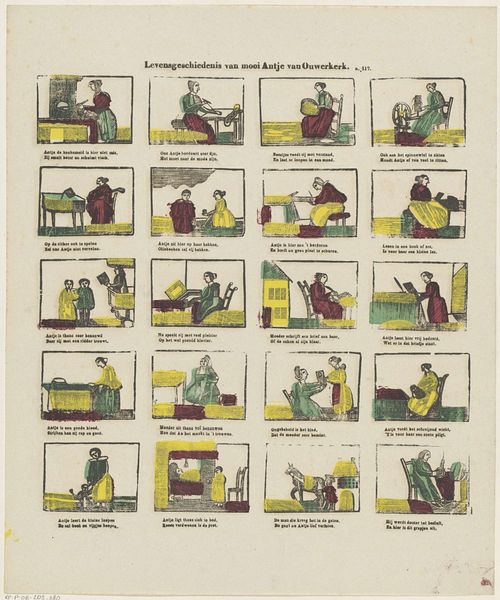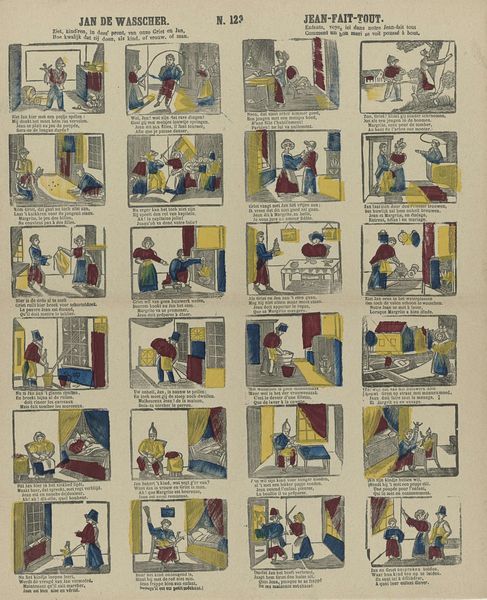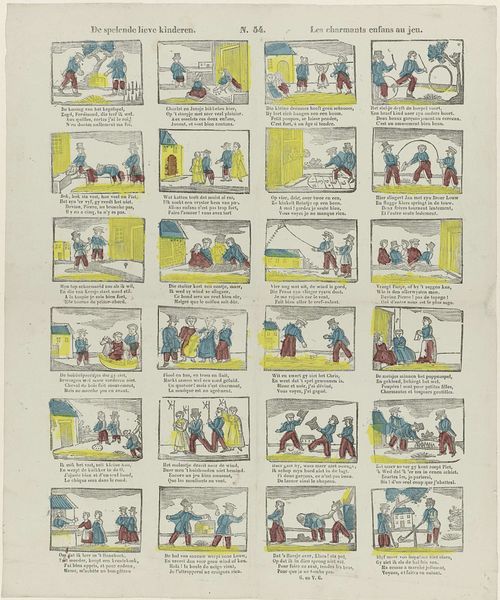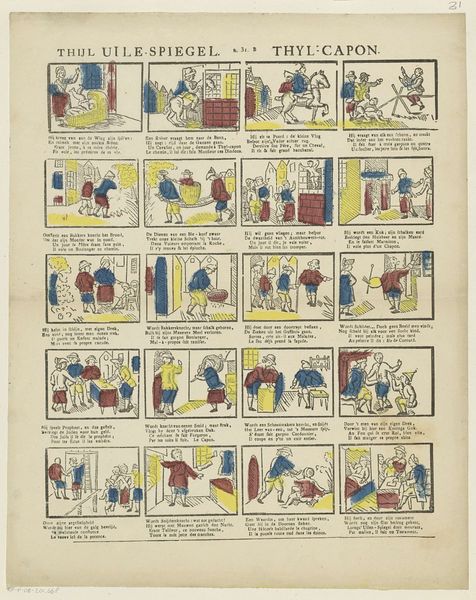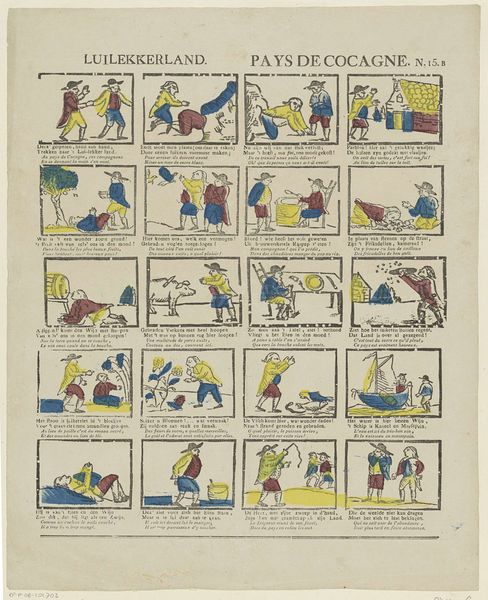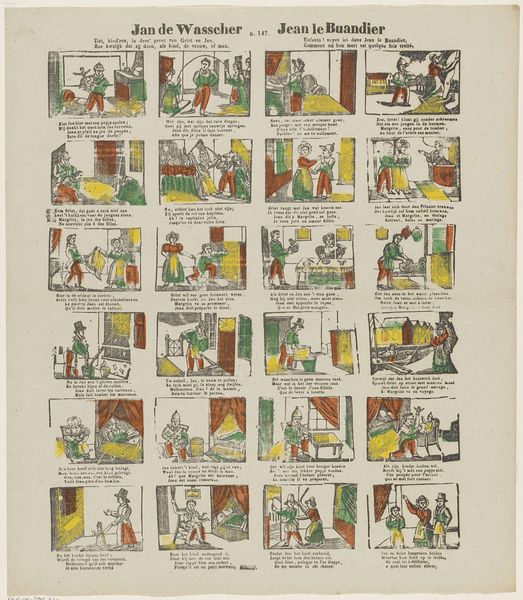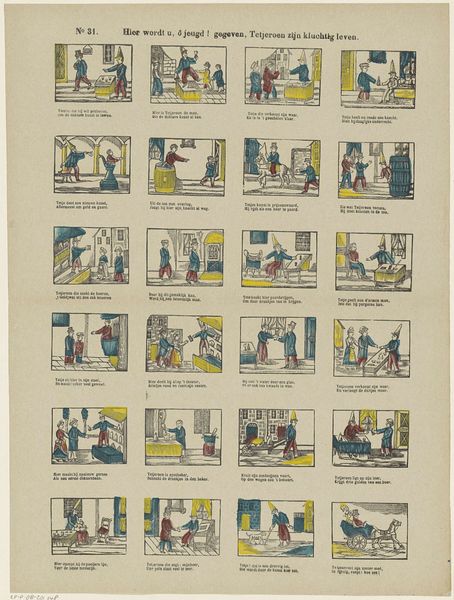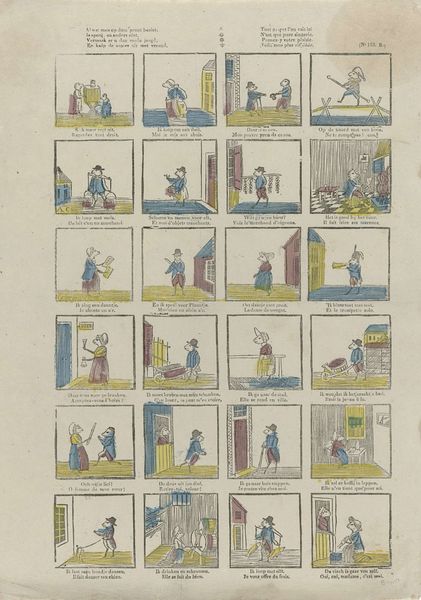
graphic-art, print
#
graphic-art
#
narrative-art
#
comic strip
#
dutch-golden-age
# print
#
comic
#
cityscape
#
genre-painting
Dimensions: height 421 mm, width 290 mm
Copyright: Rijks Museum: Open Domain
Editor: Here we have "De Amsterdamsche kermis vreugd" from Glenisson & Zonen, dating somewhere between 1856 and 1900. It's a print, seemingly depicting scenes from a fair. What immediately strikes me is the compartmentalized composition. How do you approach a piece like this? Curator: From a formalist perspective, the piece presents a fascinating interplay between text and image. Consider the grid structure, where each frame functions almost as a miniature stage. The limited color palette – primarily red, blue, and yellow – emphasizes the linearity and graphic nature of the work, reducing forms to their essential shapes. Editor: So, it’s the formal structure that carries the most meaning for you? Curator: Precisely. Observe how the artist uses repetition – in the figures, their clothing, and the architectural elements – to create rhythm and visual unity across the disparate scenes. Even the typeface and its placement contribute to this overall structure, acting as another visual element within the grid. Notice too, the flattening of space within each scene. Does this choice, coupled with the limited color range, tell us something about the artist’s intentions? Editor: I see what you mean about the repetition creating unity. And yes, flattening the image plane removes any sense of realism or deep perspective. So, are you saying the narrative itself becomes less important than how it's presented? Curator: I would posit that the ‘what’ is subservient to the ‘how’. The emphasis is on the aesthetic relationships established within the artwork, the interplay of line, color, and form. The fair is secondary to how it's rendered. Editor: That’s a perspective I hadn’t considered before. Focusing on the arrangement of elements rather than the subject itself...fascinating. Thanks for that breakdown! Curator: It underscores how critical engagement with art necessitates an appreciation of the artistic method, of the work itself as the primary source of significance.
Comments
No comments
Be the first to comment and join the conversation on the ultimate creative platform.

